The Best Insulation for Existing Homes
The Best Insulation for Existing Homes
There is a lot to consider and think about before you take the plunge.
Things like, will the insulation stop drafts from getting into your home? Does the material need to be maintained over time and eventually replaced? Will it help lower monthly energy bills? Can the insulation make the rooms in the home more comfortable?
If you’ve landed on RetroFoam injection foam insulation for your existing walls, those are issues you won’t need to worry about anymore.
Here in this guide, you will find answers to all of your questions regarding RetroFoam injection foam insulation for your existing walls. We’ll cover the signs it’s time to update your exterior wall insulation, the pros and cons of RetroFoam, what factors determine the cost, and a whole lot more.
This guide was created with you, the homeowner, in mind to answer all of your questions. So, sit back and enjoy the ride while we break down everything you need to know about RetroFoam insulation.
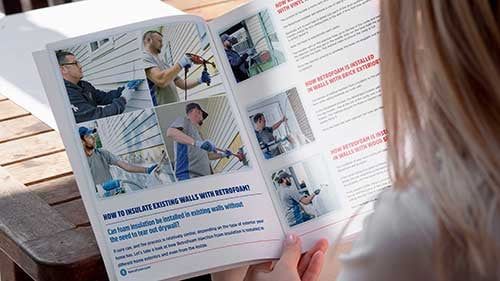

Read straight through in about 25 minutes or click on any section to go directly to it.
You could be experiencing several issues in your home due to little or no insulation in your exterior walls, and some of them you may not even realize are connected.
It might be hard to tell whether your walls have any insulation at all, but a quick look behind an outlet cover or light switch can at least give you an idea of what you’re working with.
The non-visual signs you need to update your existing wall insulation can be very annoying, especially if you’re dealing with comfort and even health issues related to it.
Let’s dive right into these issues and talk about how RetroFoam insulation can help.
If your exterior wall insulation isn’t working, you’re likely experiencing high monthly energy bills.
This is because the current insulation, or lack thereof, is allowing air movement into your home. This air movement is causing your home to be uncomfortable, but also causing your furnace and air conditioner to run constantly.
Those mechanicals running to try and keep your home at a constant temperature is going to end up costing you a small fortune, plus added maintenance costs.
RetroFoam can help combat those high heating and cooling costs thanks to the air seal it creates. The injection foam insulation keeps the air you pay to heat and cool inside where you want it -- not leaking out through your walls.
Are you noticing rooms in your home are uncomfortable and nothing you do fixes the problem?
Running your air conditioner and furnace all the time isn’t going to fix this problem. It all stems from the air movement we mentioned previously.
Not all of the fans in the world in your living room are going to keep it comfortable if your insulation is allowing the hot summer air inside. All of the space heaters also aren’t going to keep it warm in the winter.
The key to fixing this problem is to create an air seal in your exterior walls that block those outside elements from getting inside your home.
We mentioned this a few times previously, but it’s worth stating again -- if you have air leakage coming through your exterior walls, your mechanicals are going to run constantly.
Air leakage accounts for 25 percent all the way up to 40 percent of the energy used for heating and cooling a home, according to Energy Star. What that means is your furnace and AC unit are pulling double duty to try and maintain the temperature you have set for them without making a dent.
RetroFoam insulation works to make your home more energy efficient by helping reduce your energy consumption. The injection foam creates the air seal that will finally give your AC unit and furnace the break they need.
Where there is a will, there is a way.
The outside air is looking for any path to get inside your home. If you’re feeling air coming through your outlets and light switches, then your wall insulation is lacking.
You might even be able to feel this air movement around the baseboards of your walls.
Sealing drafty walls can eliminate those drafts coming in through those outlets and baseboards.
If you notice condensation or mold forming on your walls, this is a serious issue that needs to be dealt with immediately.
When there is a drastic temperature difference between the inside and the outside of your home, when those temperatures meet, condensation will form. When the condensation forms, it’s an open invite for mold to take hold and start growing.
If there is old fiberglass or cellulose in your walls, that is where the mold will start to grow as it spreads out to your drywall. This is because traditional insulation allows for the air movement that caused the condensation in the first place.
RetroFoam insulation actually prevents this because it blocks the two temperatures from meeting in the first place. Another added benefit is that RetroFoam doesn’t promote the growth of mold and mildew as it doesn’t serve as a food source.
Can you feel the cold coming from your exterior walls before your hand even touches them?
Those cold walls are contributing to the discomfort you’re feeling throughout your home. Stopping the air movement through the walls can fix this problem and alleviate the need for extra pairs of socks and blankets to keep warm.
No one wants to have a cold dinner, and if your cabinets are cold, so are your dishes.
This may not seem like an issue related to poor insulation, but it is directly linked to cold exterior walls. The air movement is coming in through the exterior walls in the kitchen and right into the cabinets.
Preventing air movement through the walls will ensure cold dishes won’t put a damper on your dinner.
Did you know that traditional insulation, like fiberglass and cellulose, can shift, settle, and sag over time?
If the traditional insulation in your walls is more than 15-years-old, you likely have gaps in coverage as the materials age. The good thing about RetroFoam insulation is that it never breaks down over time, and you will never have to replace it. Once the injection foam is installed, it will last for the lifetime of the home.
Mice, squirrels, bats, and any number of pests will take up residence in the fiberglass or cellulose if they get inside.
When you think of a pest infiltration, you’re probably only thinking of your attic or basement, but it can actually happen in your walls as well.
It’s annoying to have these animals in your home, and it can become a health concern. As those critters pull and scratch at the fiberglass and cellulose in the wall, they leave huge gaps with no insulation coverage.
RetroFoam isn’t an inviting material to these pests to try to make a home in.
When you think about seasonal allergies, you likely think it affects you when you’re outside.
If there is air movement coming from outside into your home, you or your family will start experiencing those allergies inside as well. This is because those allergens move through your traditional insulation. Fiberglass is known to hold and retain those allergens, so they flare up your allergies all the time.
RetroFoam insulation actually serves as an air barrier and keeps that pollen, other allergens, and pollutants out of your home.
If you are experiencing any of the above issues, it’s time to update the insulation in your exterior walls.
Adding RetroFoam injection foam insulation to your existing walls can address and fix the signs and symptoms we just talked about. The foam insulation does this because it creates an air seal that isn’t possible with traditional insulation.
This air seal works to make your home healthier, more comfortable, and energy-efficient.
But now you’re probably wondering, “what is RetroFoam?” Keep reading. We’ve got the answers.
RetroFoam is an injection foam insulation that is used for existing exterior walls and concrete block walls.
Injection foam insulation, like RetroFoam, is best suited for enclosed wall cavities and can be installed from the outside, so there is no need to tear down your drywall.
RetroFoam insulation is Class One Fire Rated, which means if there were a fire in your home, it doesn’t act as a catalyst. Once the flame is removed, the foam will self-extinguish.
RetroFoam also doesn’t off-gas, is environmentally friendly, and is safe to have in your home.
In your research, you might have noticed some contractors using the phrase “spray foam insulation in existing walls” to describe injection foam. We will dive deeper into the difference between the two in just a little bit.
RetroFoam is a tripolymer based resin that creates odor-free, non-toxic foam insulation.
This resin is mixed with water and a foaming agent in the RetroFoam installer’s trailer. Once it’s mixed, the final product looks a lot like shaving cream and even has the same consistency.
It’s that shaving cream consistency that helps RetroFoam insulation completely fill the cavity, getting into all of the nooks and crannies, as well as spreading around wires and pipes in the wall.
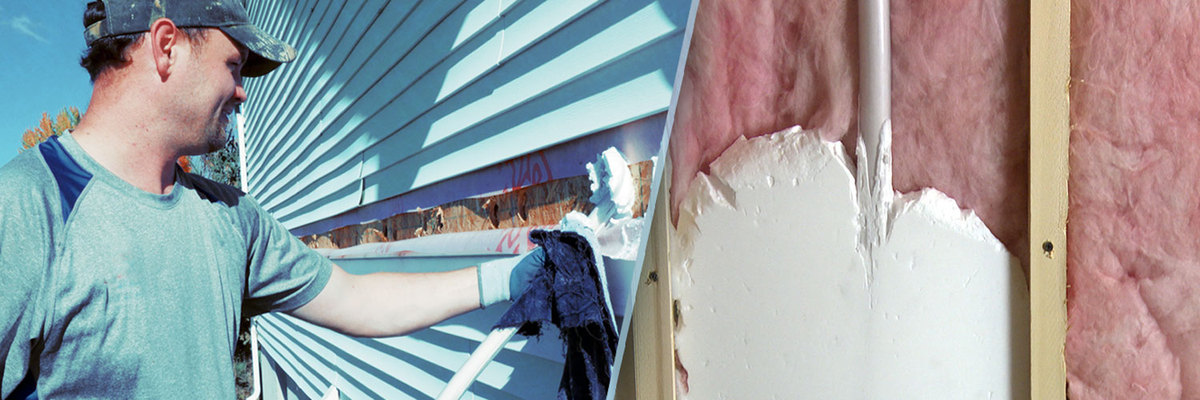
RetroFoam is absolutely safe to have in your home.
RetroFoam insulation doesn’t off-gas, is Class One Fire Rated, and is environmentally friendly.
There is a lot of misinformation about foam insulation and whether it’s safe, so let’s clear that up to ease any concerns you might have.
Off-gassing is more of a concern when it comes to spray foam insulation.
That off-gassing, or volatile organic compounds, are little bits that are expelled when the foam is sprayed. Hairspray, body spray, and even your dry cleaning technically off-gas.
Injection foam insulation, more specifically RetroFoam, doesn’t have any off-gassing at all.
RetroFoam home insulation is Class One Fire Rated, which means it doesn’t act as a catalyst if there were a fire in your home.
Once the fire is extinguished or the flame is removed, RetroFoam will self-extinguish.
Let’s talk a little bit more about what that fire rating means.
The fire rating system for insulation is basically how long the material can withstand a standard fire resistance test.
A Class One Fire Rating really means the flame spread and smoke development index, or how fast the flame will spread in the insulation and how much smoke it produces.
To get this Class One Fire Rating, the insulation must have a smoke development of less than 450 and a flame spread index of 25 or less.

The word formaldehyde can be very scary, especially when it comes to your home.
Tobacco smoke, cosmetics, lotions, shampoo, conditioner, shower gel, keratin hair smoothing treatments, and some fingernail polish all contain some level of formaldehyde, according to the American Cancer Society.
Other things that have trace amounts of formaldehyde are crafters glue, caulk, drywall adhesive, some insulation boards, and some liquid detergents, according to the U.S. Department of Health and Human Services.
Now that you know about all the things with formaldehyde in them, let’s talk about that RetroFoam formaldehyde content.
RetroFoam injection foam insulation has a trace amount of formaldehyde present in the dry product at 0.06 parts per million, but it bonds to the material when it is mixed in the installer’s truck. This means the finished RetroFoam product in your walls is classified as formaldehyde-free because it can't escape that bonding.
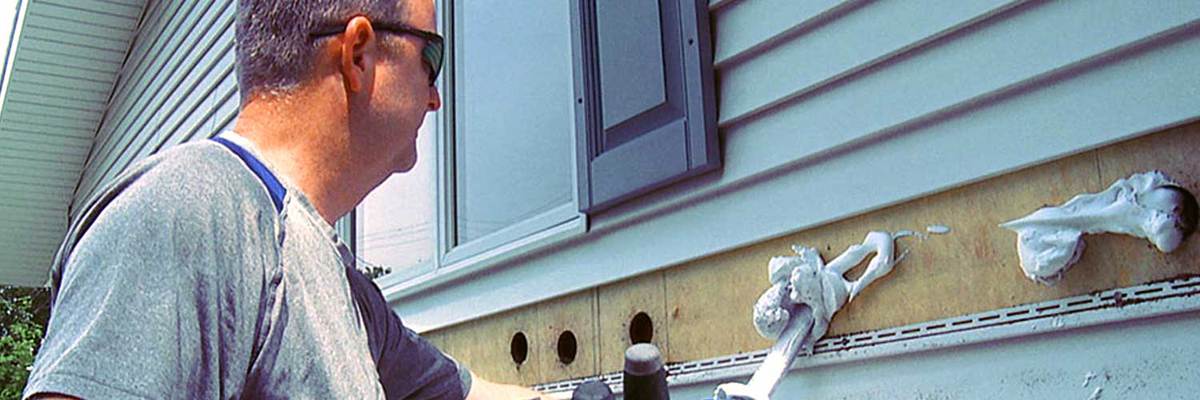
RetroFoam injection foam is an energy-efficient insulation that creates an air seal in enclosed cavities.
Unlike traditional insulation, RetroFoam never loses its shape, and it won’t settle, compress, shift, or sag as time goes on.
The insulation you have in your walls should help your home maintain a constant temperature without putting an unnecessary strain on your AC unit and furnace. This is why the air seal created by RetroFoam makes it an energy-efficient foam insulation that works to lower your heating and cooling costs.
When energy-efficient wall insulation does its job, it affects the conduction (heat transfer) and the convection (airflow), which are huge factors in your home’s performance. The air seal created by RetroFoam insulation reduces air leakage and also provides heat resistance.
We’ve told you about all of the pros of RetroFoam insulation, but it wouldn’t be very transparent if we didn’t talk about the cons as well.

In being transparent, here is a full look at the good and potentially not-so-good pros and cons of RetroFoam insulation.
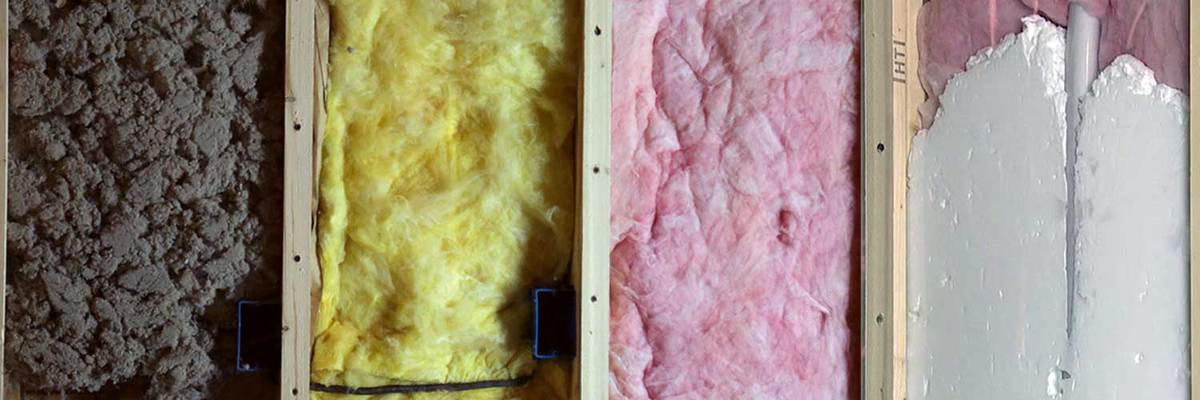
Sometimes it just isn’t meant to be, and we get it.
There are several reasons why RetroFoam insulation might not be a good fit for you.
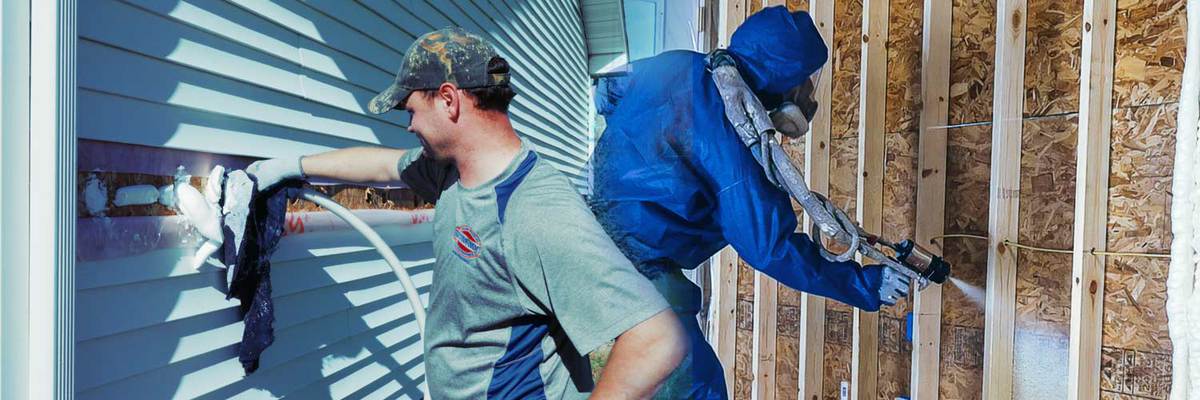
Some homeowners run into some confusion when researching home insulation because there are contractors who use spray foam and injection foam interchangeably.
While the two create an air seal and make homes more energy-efficient and comfortable, there are some differences. The biggest difference between spray foam insulation and injection foam insulation is really how they are installed and where.
The home’s exterior can change the installation process, but we’ll get more into that in a few minutes.
Another thing to note for injection foam is that the old fiberglass in the walls doesn’t need to be removed. If there is cellulose, the installer will try to remove as much of it as possible before injecting the foam. This is done because cellulose won’t compress in the wall cavity the way that fiberglass does, so in some instances, it can act as a barrier in the wall, so the foam doesn’t completely fill it.
Before the spray foam can be applied, all of the old insulation in the space must first be removed. This is because the spray foam needs a clean surface to adhere to.
Another measure the installers take before the spray foam is applied is to prep the area. This means any furniture or other items should be moved out of the area or to the room’s center. The installer will then cover everything in plastic, including the floors and surfaces like countertops or railings. This is done to ensure spray foam doesn’t get on anything.
These are the ways spray foam and injection foam are different, but they are similar in the ways that count the most for your home. Both materials create an air seal that helps you seal your building envelope from the top to the bottom.
This air seal will work to create the home you’ve always wanted -- one that is energy efficient and comfortable.
Now it’s time to go more in-depth about how RetroFoam injection foam insulation is installed in existing walls without the need for a total remodel.
Can foam insulation be installed in existing walls without the need to tear out drywall?
It sure can, and the process is relatively similar, depending on the type of exterior your home has.
Let’s take a look at how RetroFoam injection foam insulation is installed in different home exteriors and even from the inside.
The process to insulate a home with vinyl or aluminum siding is the same.
The RetroFoam installer will remove a row of siding around the entire home.
Generally, a 2 ½-inch hole is drilled into each of the stud cavities, and the installer checks for any obstructions in the wall. If they find one, another hole is drilled above it.
Next, the foam is injected into each cavity.
The installer will run the injection hose up to the top of the cavity and begin the injection. Once they get to the middle, they run the hose from the bottom up, injecting the foam. This method helps to ensure the cavity is full.
Once the injection process is complete, the holes are plugged, and the siding is replaced.
The process of adding injection foam insulation to the brick exterior is different from other siding materials we work with.
In this installation process, the RetroFoam installer will drill three ⅝-inch holes into the mortar -- one at the top of the cavity, one in the middle, and one at the bottom. This method ensures the foam is injected into each cavity while completely filling it.
Once the foam has been injected, the holes are filled with mortar.
The condition of your wood siding will determine how the installation of the RetroFoam will be done.
If the wood siding is in good condition, it can be removed, and the holes will be drilled into the sheathing underneath. Once the installation is finished, the holes are plugged, and the wood siding is replaced, much like aluminum and vinyl.
If the wood is brittle, there is a chance it could break, so it makes more sense to just drill through it. In this case, 2 ½-inch holes are drilled into the wood siding, and the foam is injected into each cavity.
Once the foam has been injected, the holes are filled with wooden plugs.
The installation process for concrete block walls requires drilling holes into the middle of the wall to access the cores of the blocks.
The bricks’ cores are lined up, so injecting the foam is a breeze once the holes are drilled into the core. The foam will fill all of the cores and any other gaps where air can move through.
Once the cores of the bricks have been filled, the drilled holes are filled with mortar.
When insulating homes with stucco siding, three ⅝-inch holes are drilled into each wall cavity. One at the top, one in the middle, and one at the bottom.
Much like the process for brick exterior, this method ensures that the foam fills each and every cavity.
After the foam has been injected, the holes are filled with mortar.
When installing RetroFoam from the inside, the prep is essential as you don’t want to end up with drywall dust all over your home.
Your RetroFoam installer will make sure all of the surfaces and items in the area of the home where the foam will be installed are covered in plastic.
Once all of the prep work is done and everything is covered in plastic, the installer will make a chalk line on the walls and then drill the holes centered on that line.
Much like an exterior installation, the installer runs the injection hose from the top of the cavity down and then from the bottom up.
Once the foam has been installed, the holes are plugged, and a rough patch of drywall mud is applied.
If you have considered any of the following, check out answers below.
RetroFoam installers go through extensive training to ensure the wall cavity is filled with injection foam insulation.
This unique training includes checking for obstructions in the wall, running the injection hose from the top to the middle and then from the bottom up, and listening to the sound of the hose as the foam is injected.
It is rare, but RetroFoam can bow or crack drywall when it is installed.
A common misconception is that injection foam expands in the wall cavity like spray foam, but that’s incorrect.
The majority of the time, around 90 percent, when the drywall cracks or bows during installation, there was previous damage, or the drywall wasn’t installed properly.
If the drywall is only glued to the studs, it will likely push out when the foam is injected. The pressure of the RetroFoam being injected can cause this to happen.
If the studs where the drywall was hung aren’t universally on center, then this could also lead to issues during installation. In most cases, studs are 16-inches on center, meaning there should be 16-inches from the center of one stud to the center of the next.
When the studs are universally on center, the drywall is hung center to center. If not, then there are large sections of drywall with no support. When there isn’t any support, there is a higher chance the drywall will bow and crack.
If there is any previous moisture damage to the drywall, then it will be weaker in those spots. This is another reason the drywall may bow or crack during installation.
You’re probably wondering now what will happen if you need to run wire through the foam insulation.
Luckily, RetroFoam is very pliable, so it wouldn’t be difficult if the need arose that you needed to replace your electrical wiring.
Here’s how it’s done.
When fishing wire through the existing foam in the walls, it takes patience and skill to ensure you don’t create a gap in the insulation. The electrician can use fish tape to pull the wiring through the foam.
The good thing about RetroFoam is it is delicate enough to push the wire through without any hesitation.
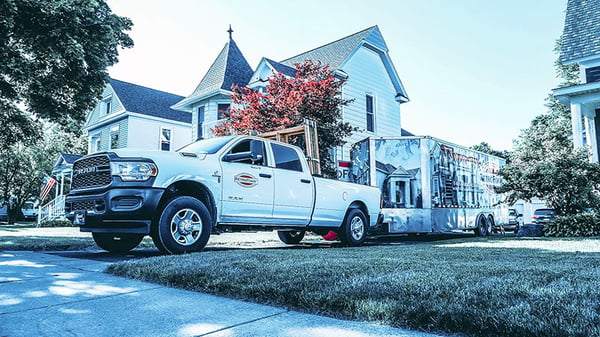
There are RetroFoam dealers across the country, and each of those dealers set their own pricing.
While each dealer sets their own cost, several factors are universal in determining the final price tag.
The good thing about creating an air seal in your exterior walls is that it is going to make your home more energy-efficient.
There are actually some financial benefits to making energy-efficient home improvements.
At times, tax credits are available for making these kinds of improvements to your home. Talk with your tax provider to see what may be available.
Another avenue comes in the form of rebates. Some energy providers offer rebates to customers who make performance improvements to their homes.
These tax credits and rebates vary in the amount you could be eligible for, so make sure you talk to your project manager about what might be available to you.
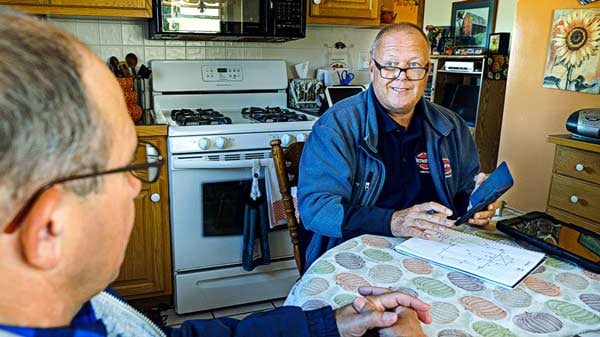
You’ve already contacted your RetroFoam dealer, and a project manager is coming out to give you a quote.
The project manager is going to come to your home and discuss the issues you’re experiencing. They will measure your exterior walls and figure out what kind of insulation, if any, already exists in there.
While taking measurements, the project manager will also take note of the kind of exterior your home has and any challenges there could be regarding the installation.
Next, the project manager will come in and go over their notes with you. At this point, they will give you the concrete cost of your project. They will discuss with you the installation process and everything you can expect on the day of the installation.
The only thing left to do after this is getting your job on the calendar.
Hopefully, these tips have answered all your questions about RetroFoam insulation for your existing walls.
If you’d like to take a deeper dive, the Learning Center has a ton of resources like videos and articles that you might find helpful.
If it looks like you might be a good fit for RetroFoam insulation, search our dealer directory to find a dealer in your area.
From there, you can request a quote and connect with your local RetroFoam dealer to come up with a plan for your specific project.
Love your home for the potential you always knew it had now that it is more comfortable and energy-efficient with RetroFoam.
RetroFoam dealers make up a large network that spans across 28 states in the U.S.
Each of these dealers goes through specific training on how to install RetroFoam insulation expertly. As part of the RetroFoam family, dealers are brought together to network and share their ideas and techniques with fellow dealers.
We are always looking for new dealers to join the family.